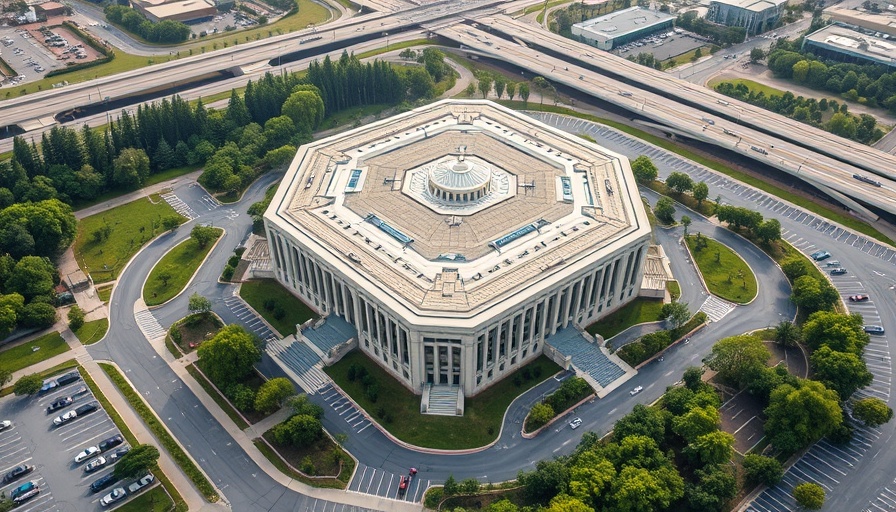
The Pentagon's Bold Move: Cutting Civilian Staff at DTIC
The US Department of Defense has announced a drastic reduction in the civilian workforce at the Defense Technical Information Center (DTIC), trimming it down to a mere 40 employees. This decision, communicated through an internal memorandum on August 4, 2025, reflects a significant shift in military operations and a push towards embracing digital efficiencies. In total, 193 positions, approximately 80% of the DTIC's civilian staff, will be eliminated, saving the department roughly $25 million annually.
Why This Matters: The Role of DTIC
DTIC has served as a crucial repository for defense-related research and development (R&D) data for decades. Operating since before the Pentagon was built, it has accumulated significant historical data pertinent to the armed services. As underlined by the Acting Administrator of DTIC, Dr. Silvana Rubino-Hallman, the ongoing changes are not only about budget cuts but also about refocusing the organization to meet modern challenges.
Understanding the Push for AI Integration
The military’s recent moves, including the notable decrease in personnel, are driven by a larger trend of increasing digital transformation through artificial intelligence (AI). The Undersecretary of Defense is keen on implementing an "AI-first digital transformation" to streamline operations and enhance efficiency. This technology will play a crucial role in addressing the global skills gap in defense, aiding in quicker decision-making processes. As AI tools become more integral to defense strategies, the shift is not merely economic; it's a strategic imperative for national security.
Future Predictions: What Lies Ahead for DTIC?
The restructuring of DTIC raises significant questions about the future role of human intelligence in defense operations. With algorithm-based technologies gaining prominence, the military might see a reduced emphasis on traditional human roles. The efficiency policy currently underway could set a precedent for other departments within the military to adopt similar models, shifting funding away from personnel costs toward advanced technologies that enhance military readiness.
Counterarguments: The Human Element in Defense
While the integration of AI appears beneficial for operational efficiency, critics argue that relying heavily on technology could compromise strategic thinking and human judgment. There are concerns about the risks of reduced staffing at DTIC, particularly in areas requiring nuanced understanding and decision-making that AI cannot replicate. The balance between leveraging AI and retaining skilled personnel in critical roles remains a hot-button issue within defense circles, with some advocating for a hybrid approach.
Local Impact: What This Means for Mississippi Workers
In Mississippi, defense-related jobs are critical to the local economy and state pride. The news of significant layoffs at a federal defense institution may echo concerns about job security among contractors and support staff in the area. While the state has witnessed a recent increase in tech-driven job opportunities, the transition can be challenging for workers who may not have the skills required for emerging AI roles. Community colleges and vocational programs will play an integral part in reskilling this workforce for the future.
Conclusion: Navigating a New Era of Defense
The Pentagon's restructuring of the DTIC signifies more than just budgetary constraints; it reflects a pivot towards AI and automation that will redefine defense operations. As military leaders and organizations adapt to these changes, it is vital for communities, especially in areas heavily reliant on defense jobs, to understand and prepare for the implications. Proactive measures, such as fostering skill development in emerging technologies, will be crucial for ensuring that local workers are not left behind.
As these shifts continue, staying informed and engaged with local educational and workforce initiatives will empower communities to navigate the evolving landscape of defense and technology effectively. By understanding these developments, individuals and communities can take actionable steps to align themselves with the future of work in the defense sector.
 Add Row
Add Row  Add
Add 




Write A Comment